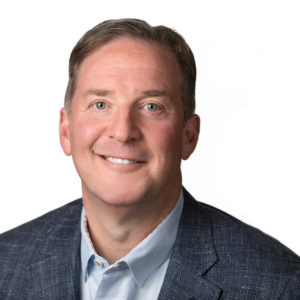What Does Active Allyship Look Like In The Workplace?
Many companies around the globe have implemented diversity, equity, and inclusion (DEI) strategies to avoid inequities in the workplace. However, many groups of people are still facing microaggressions, racism, stereotypes, double standards, and unconscious bias. No matter how many strategies and roadmaps are carved, allyship can only be enforced if people practice it daily while interacting with their colleagues. For example, they need to listen closely to one another and respond appropriately. In such environments, people are 50% less likely to quit their jobs, 56% more likely to improve their productivity, and 167% more likely to recommend their places of work to others. As a result, active allyship in the workplace builds and nurtures professional and personal relationships that last over time.
What Is Performative Allyship And Why Should It Be Avoided?
Social media and public outcry have forced many organizations to face their wrongdoings and explain themselves. But people don't want to read a simple statement of apology and, instead, demand to see change in practice. Performative allyship is when companies act only to gain social approval and maintain a positive image. Instead of updating their policies and organizing inclusivity training courses, they release public apologies and make donations. While all these seem positive, at their core, these companies may not advocate for misrepresented and oppressed groups. Their actions don't aim to tear down the status quo and replace it with an inclusive and respectful workplace. In other words, performative allyship doesn't center on understanding diversity problems and, as a result, perpetuates these issues and pushes people to further marginalization.
7 Ways Colleagues Can Show True Support Around The Office
1. Honest Introspection And Accountability
Our brain receives about 11 million bits of information per second and consciously processes 40 bits. The rest are stored in our unconscious minds and impact our decisions. Our biases tend to present themselves when we meet someone for the first time and start shaping thoughts about them. To be a good ally, people must look deep into their pool of unconscious bias and recognize every stereotype. It's important to understand that we all grow up in a society that tends to favor certain groups of people over others. Employees need to be accountable for their harmful language and behavior and work towards improving. For example, someone might say the wrong thing and get defensive, when they should really take a step back and think. Why did their language bother their coworker so much, and what can they do to learn from it and improve?
2. Acknowledgment
People come from unique backgrounds, and it's normal if they are not aware of someone else's experiences. Acknowledging that they don't know everything and making an effort to learn are pieces of the puzzle leading to active allyship in the workplace. To achieve that, every employee needs to recognize their privileges and possibly make a list of the things they've always taken for granted. For example, did you ever have to hide your partner's gender? Being privileged does not mean that people don't work hard for their achievements. Addressing privileges fosters an open and honest environment and allows colleagues to propel their coworkers forward.
3. Listening, Empathy, And Feedback
Colleagues must practice active listening to increase their level of awareness. It's crucial to listen to their coworkers' experiences and troubles and believe them. Being their confidant will help marginalized people feel seen and respected. Everyone should also practice empathetic engagement, which is about asking the right questions. For example, if someone makes a racist remark as a joke, instead of going into attack mode, ask them to explain it to you because you don't find it funny. Judgment-free questions will help others recognize their own bias and address it. Additionally, managers and upper-level personnel must ask about the opinions of marginalized groups before and after implementing inclusivity measures. Making such decisions from a privileged position isn't always beneficial for everyone.
4. Open Conversations
To encourage open and authentic discussions, a workplace environment requires psychological safety. This means that people should be able to openly talk about their beliefs and ideas without fear of repercussions. Also, they should feel safe pointing out any microaggressions and biases they witness. To create such a workplace environment, employees must listen to the concerns of marginalized and misrepresented groups and not gaslight them. For example, they should not try to discredit their recollection of events or belittle their emotions. They should simply listen empathetically without interrupting and focus on what they can do to improve their behavior.
5. Be An Active Bystander
Many employees report they have second-guessed themselves after witnessing or experiencing bias since they weren't sure if the act was discriminatory. However, staying silent is never beneficial, and to exercise active allyship in the workplace, colleagues need to take a stand. Managers should lead by example and encourage reflection among their employees. For instance, if someone says to a female colleague, "I didn't expect you'd be so good at this," challenge them and ask them calmly why they said that. This way, you turn a microaggression into a micro-intervention and help someone address their double standards and unconscious biases.
6. Amplify Marginalized Voices
Wanting to be a good ally and listening to others' experiences isn't enough. To make a change, both employees and management need to amplify the voices of those that society usually ignores. For example, a manager must ask people from marginalized backgrounds to offer their opinions during meetings and not monopolize their attention. Also, colleagues should give credit to someone else's accomplishments and ideas and share the spotlight. Employees who belong to minorities must feel that they are respected and their opinions are taken seriously. Especially in group projects, everyone should ensure that their input won't be ignored.
7. Training
Corporations must invest in extensive allyship training for their staff and offer them a variety of options, including online courses, webinars, and public speeches. Simply tossing a stack of articles and studies at them won't be effective. People should learn what allyship means and realize their own biases. They must also come to terms with their privilege and understand how the unprivileged suffer inequities. If a company's budget allows it, they can have interpersonal follow-up sessions to ensure everyone has truly grasped the meaning of allyship. Coworkers can create hypothetical scenarios and hold each other accountable based on their choices and behaviors. As a result, people offer guidance and show a united face against discrimination.
Conclusion
Building a culture of allyship is mandatory for corporations that want to excel and offer fair opportunities. Having multicultural and diverse workplaces has multiple benefits for team success. But not all the weight should be on organizations and companies since it is also an individual responsibility. Employees shouldn't expect others to educate them; instead, they should do some internal digging and strive to become accepting. Consequently, everyone in the office will have the same career development opportunities and achieve improved well-being.








